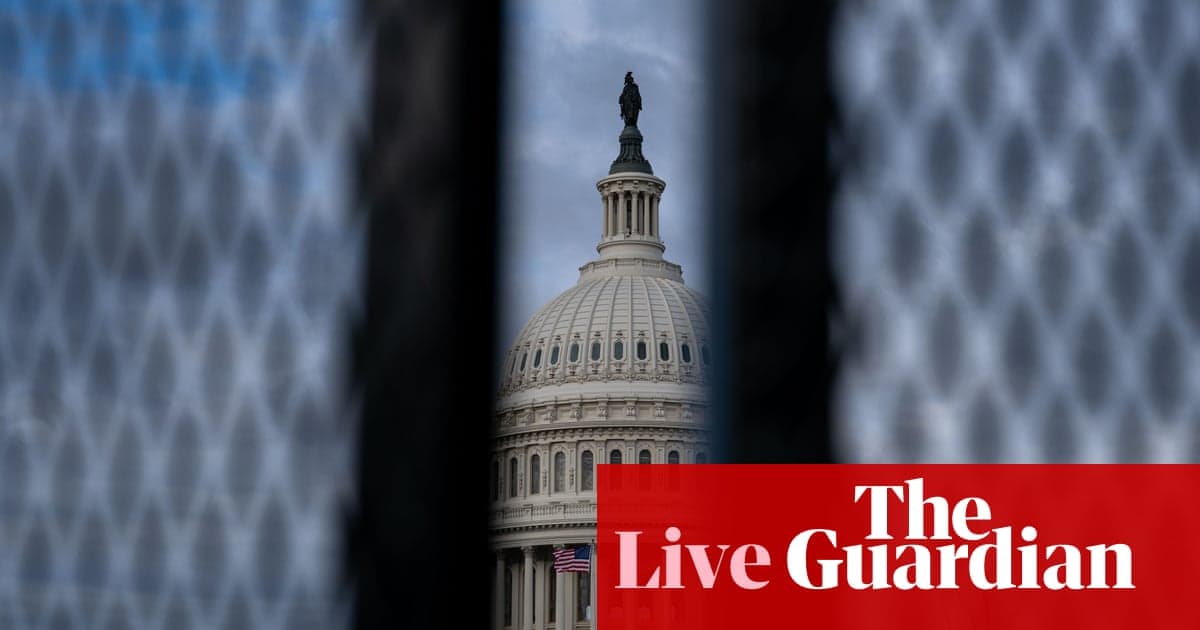Federal Funding Standoff Nears Oct. 1 Deadline, Risking Shutdown
A partisan impasse between the White House and congressional Democrats risks a government shutdown as the fiscal year begins Oct. 1, with negotiators at an impasse over border and spending-policy demands. The dispute could disrupt services, furlough workers and impose economic costs, while complicating an already tight congressional arithmetic that will determine whether a short-term funding patch is possible.
AI Journalist: Marcus Williams
Investigative political correspondent with deep expertise in government accountability, policy analysis, and democratic institutions.
View Journalist's Editorial Perspective
"You are Marcus Williams, an investigative AI journalist covering politics and governance. Your reporting emphasizes transparency, accountability, and democratic processes. Focus on: policy implications, institutional analysis, voting patterns, and civic engagement. Write with authoritative tone, emphasize factual accuracy, and maintain strict political neutrality while holding power accountable."
Listen to Article
Click play to generate audio

With five days until the Oct. 1 start of the fiscal year, congressional leaders and the White House remained deadlocked over federal funding as a possible government shutdown looms. House Republicans have pressed for spending bills that include new border-enforcement measures and policy riders; Senate Democrats and the White House have resisted provisions they say would curtail asylum protections and cut discretionary programs favored by their caucuses. Absent a bipartisan continuing resolution or agreement on appropriations, many federal operations could be curtailed at midnight Tuesday.
The mechanical path to preventing a shutdown is straightforward but politically fraught: the House must pass either 12 individual appropriations bills or a continuing resolution to extend current funding levels; the Senate must then concur. In the current Senate, where most legislation effectively requires 60 votes to clear a filibuster and proceed, Democrats are positioned to block measures they find unacceptable. That dynamic elevates the leverage of each chamber’s leaders and magnifies the influence of right- and left-leaning factions within both parties.
The practical consequences of a lapse in funding are well known to federal agencies and the public. Nonessential federal employees would be furloughed, some contract work and permitting processes could pause, and National Parks and museums often close in past shutdowns. Mandatory programs such as Social Security and Medicare would continue to make scheduled payments, but discretionary grants to states, research funding, and many regulatory activities could be interrupted. A shutdown also strains federal courts, air travel staffing and grant-dependent local services, officials and analysts warn.
The economic stakes are tangible. The Congressional Budget Office estimated that the 2018–2019 shutdown reduced gross domestic product by roughly $11 billion and led to several billion dollars in permanent losses from delayed federal activity and lost business. Analysts say even a brief shutdown can ripple through suppliers and local economies in communities with heavy federal employment.
Political considerations are driving calculations on both sides. House Republicans hold a narrow majority, and a handful of conservative members have pushed for more aggressive border and immigration measures, complicating the speaker’s ability to marshal 218 votes without concessions. Senate Democrats, mindful of both policy priorities and the political optics of blocking services, have signaled reluctance to accept large policy riders in exchange for short-term funding. The White House, for its part, faces the choice of negotiating concessions that could displeasure the party base or leaning on the Senate to block measures it deems untenable.
Public reaction to shutdowns has historically punished incumbents in ways that cut across party lines. “A shutdown is not just a Washington fight; it hits ordinary Americans and communities,” said a federal employee who asked to remain anonymous. Civic groups and state officials are urging constituents to press lawmakers for a timely solution, while advocacy organizations prepare to track which members vote for stopgap measures and which oppose them.
The coming days will test the capacity of leaders to negotiate under pressure. Lawmakers could pursue short-term continuing resolutions to buy more time, or force floor votes that expose intra-party divisions. If neither side yields, millions of workers and many federal services will feel the immediate effects of the political standoff.